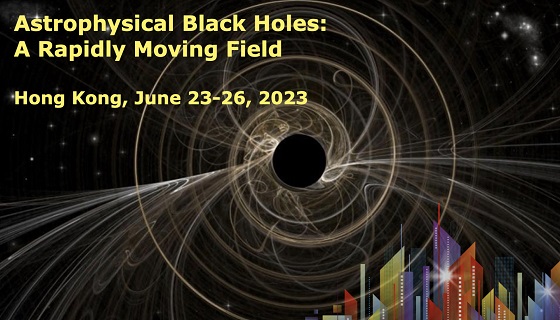Session:- SMBHs- growth and feedback
Theoretical and observational studies of astrophysical black holes have been in rapid development in recent decades. This conference will present major breakthroughs and key remaining questions concerning our fundamental understanding of astrophysical black holes, such as the formation and collimation of relativistic jets, the accretion and growth of black holes, the measurement of black hole spin, the merger of black holes, the first images of black hole shadow, the particle acceleration mechanisms and transient phenomena around black holes, and the feedback from massive black holes to galaxies.
◎The Gas Content and Star Formation in Quasars
AGN feedback is often invoked in galaxy evolution, as a key physical mechanism to self-regulate star formation and black hole accretion. Is this mechanism truly effective? How to tell? The speaker will describe a series of new experiments designed to use the ISM properties of quasar host galaxies to test the efficiency of AGN feedback. He will also introduce new methods to estimate the star formation rate, star formation efficiency, and ISM properties in quasar host galaxies, which are currently very poorly constrained. The ISM and star formation properties of quasars provide key insights into the role that black holes play in the lifecycle of galaxies.
時間:2023.06.23(三) 13:30~14:05
講者:Prof. HO, Luis 何子山 教授 (Kavli Institute for Astronomy and Astrophysics, Peking University)
↓
↓
◎Different Angles on Accreting Supermassive Black Holes
In this talk the speaker will review the phenomenology of accreting supermassive black holes and their jets. The understanding that has emerged from their systematics at multiple frequencies, combined with the results from computational simulations and connections with properties of their host galaxies and their evolution will be discussed.
時間:2023.06.23(三) 14:05~14:40
講者:Prof. Prajval Shastri
↓
↓
◎Hidden Cooling Flows in Clusters and Groups of Galaxies
Half of all clusters of galaxies have a cool core in which the temperature drops inward and the density rises as expected from a cooling flow. Over 20 years ago, High Resolution XMM RGS Spectra showed little evidence for the cooling flow continuing below 1 keV at the rates inferred from higher temperatures. The team of the speaker have now re-examined the RGS spectra of over 20 clusters and groups and 4 early-type galaxies and find that an intrisically-absorbed (HIdden Cooling Flow) model allows for significant continuous mass cooling rates to 0.1 keV and below at the level of 15-50% of the expected rates from above 1 keV. The rates range from 1-20 Msun/yr in groups to 15 -100 in regular clusters. Several highly luminous clusters have mass cooling rates of 1000 Msun/yr or more. Where available the Far Infrared flux is compatible with that expected from X-ray absorption. AGN feedback can account for 50-85% of the reduction in mass cooling rates but the remainder is significant. The speaker will discuss these results and outline the possible fate of the cooled gas, including Very Cold Gas Clouds, Low- Mass Star Formation, outward dragging by rising bubbles and non-luminous swallowing by the central black hole.
時間:2023.06.23(三) 14:40~14:58
講者:Prof. FABIAN, Andrew (University of Cambridge)
↓
↓
地點:香港大學 百週年校園 CPD 3.04 Centennial Campus
語言:英語
是會議作坊,參加者必須登記,2023.04.30 截止
【此屬轉載訊息,以主事單位發佈為準】
此活動由香港大學物理系主辦。
https://astrobh.physics.hku.hk/event/3/timetable/#all.detailed


